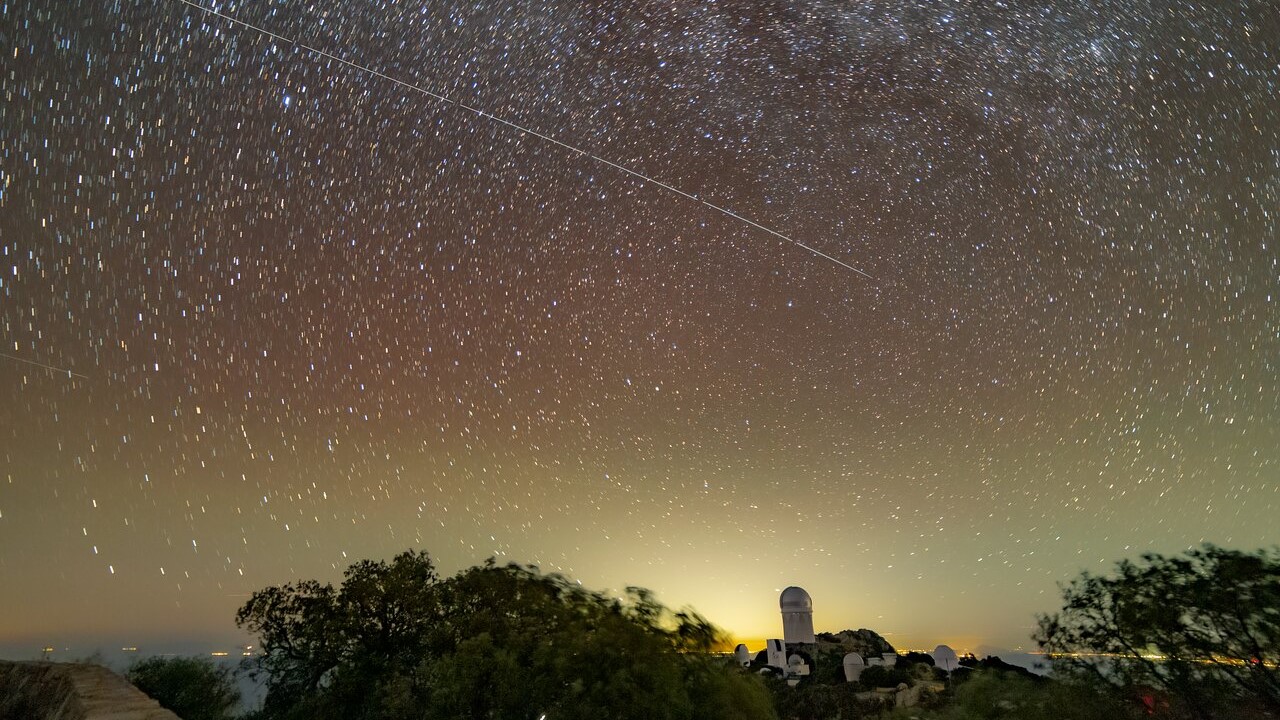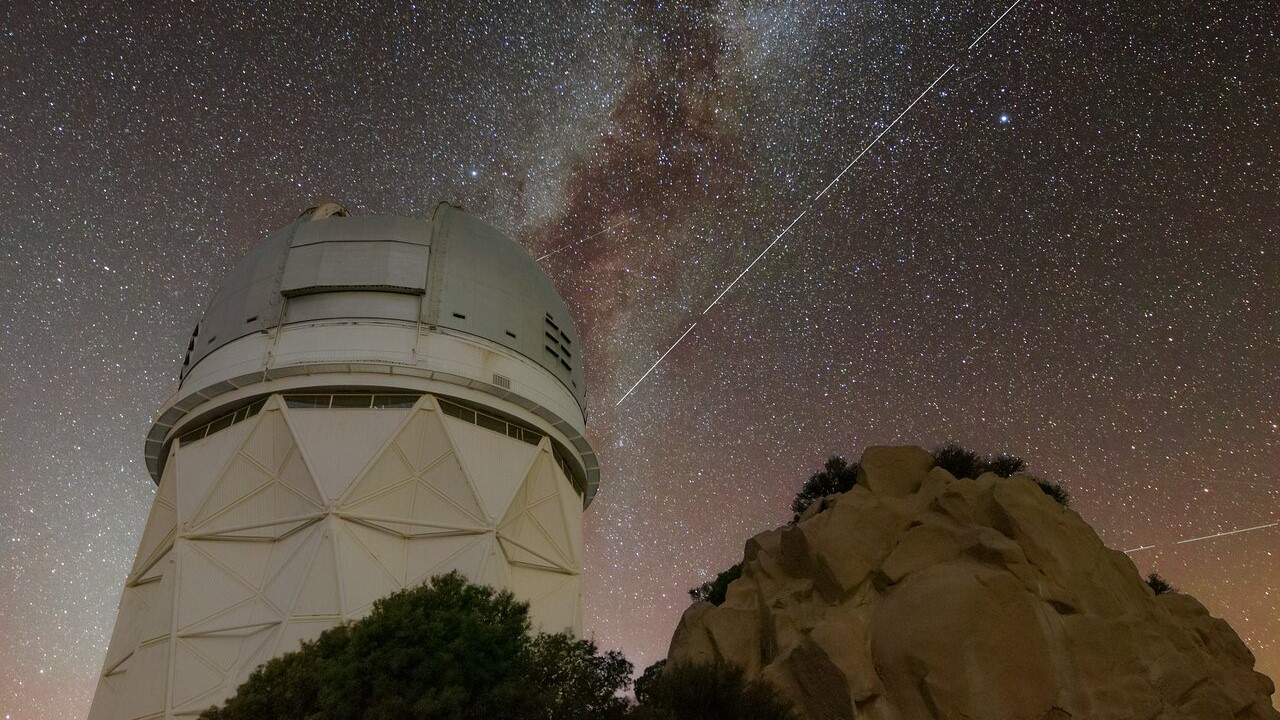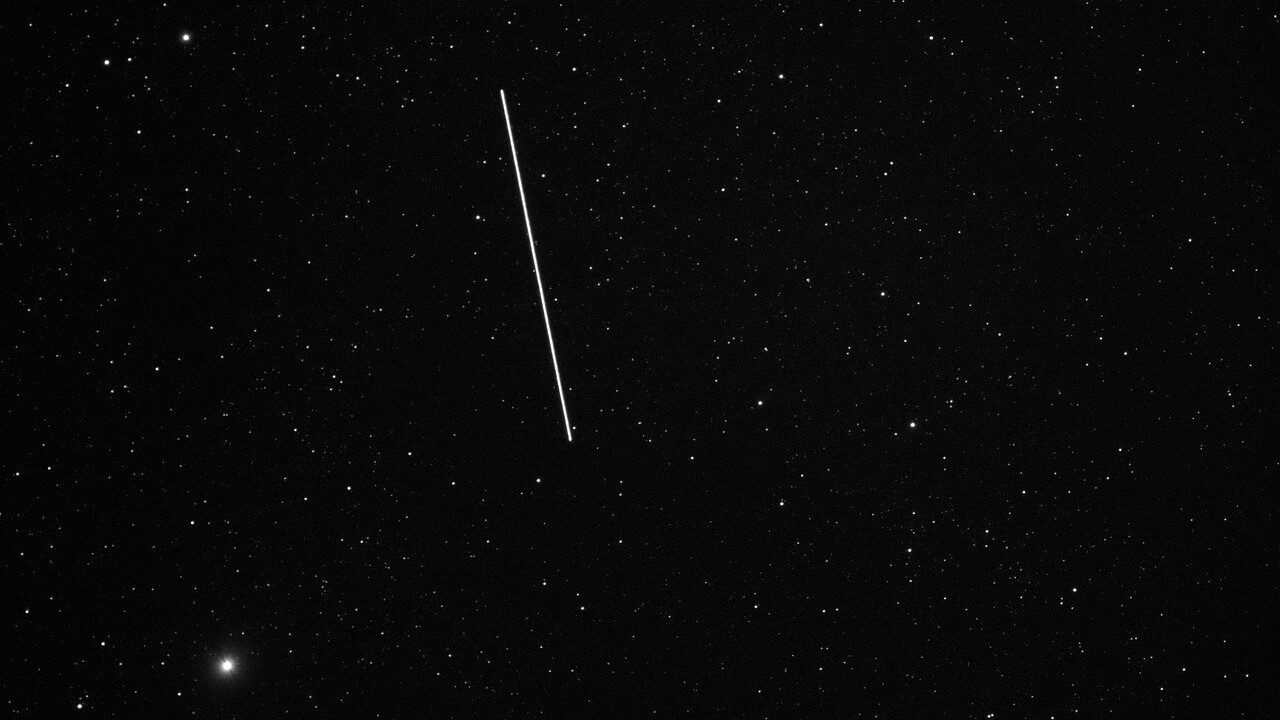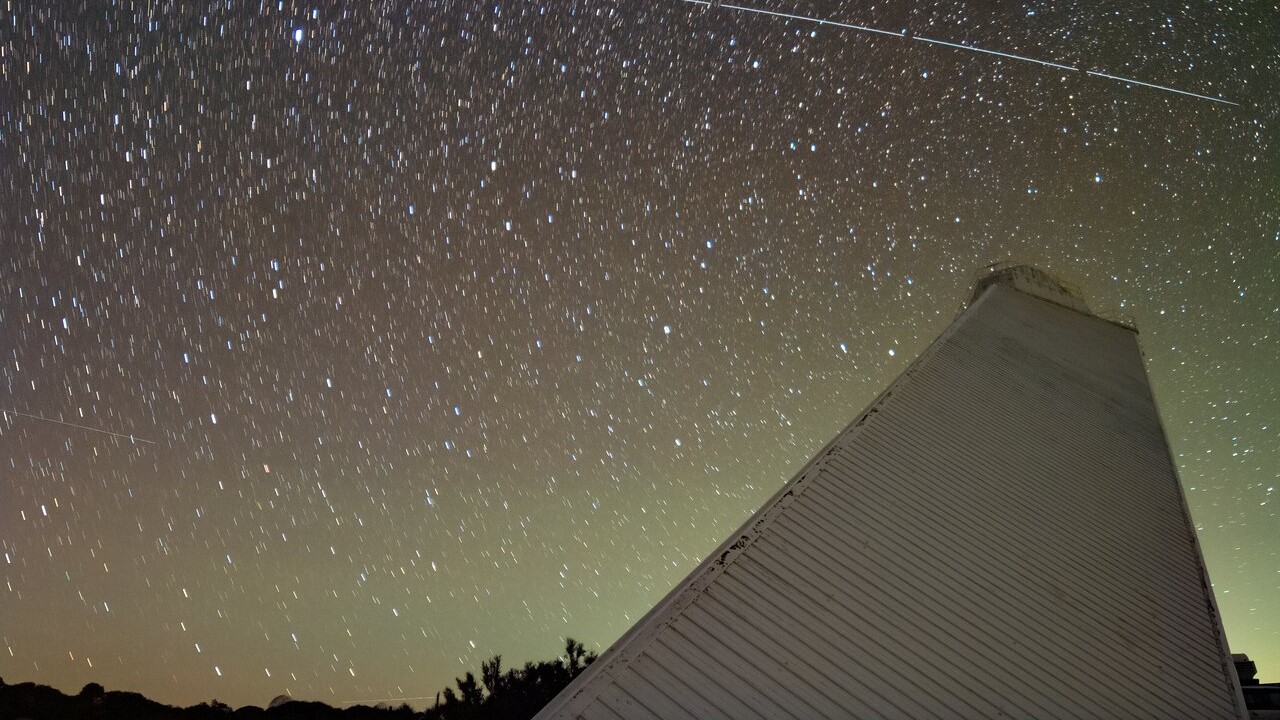Astronomers denounce super-bright new BlueWalker 3 satellite
Both optical and radio astronomy are at risk.

Astronomers are increasingly concerned about the future of the night sky as new images show shocking trails left by a massive communications satellite against otherwise clear, dark patches of sky.
In September, AST SpaceMobile launched the first satellite of a new constellation into orbit, paving the way for a system of cell phone towers in space. This prototype, known as BlueWalker 3, carries the largest antenna of any commercial communications satellite to date — and it's now one of the brightest things in the sky, outshining even some of the most famous stars. A committee of the International Astronomical Union (IAU), the international governing body of astronomy, has denounced the launch, warning of the dangers posed by this satellite and its successors.
"BlueWalker 3 is a big shift in the constellation satellite issue and should give us all reason to pause," Piero Benvenuti, an astrophysicist at the University of Padova in Italy and an IAU representative, said in the statement.
Related: SpaceX's Starlink satellites leave streaks in asteroid-hunting telescope's images
There are two main threats of bright satellite constellations like BlueWalker 3. Advocates like the IAU are concerned about the loss to "humanity's ability to experience the natural night sky" as officials wrote in the statement.



And astronomers are particularly concerned about how these streaks across the sky will impact their research observations. BlueWalker 3 isn't the first bright satellite to launch, joining thousands of SpaceX Starlink satellites that can interfere with observations in visible light. But the new beacon also emits strong radio waves, potentially affecting radio astronomy as well.
Although these projects may improve cell and internet access across the globe, the IAU urges everyone — particularly the companies launching such satellites and the regulatory Federal Communications Commission (FCC) — to consider the collateral damage to the night sky.
In response to the IAU's statement, a spokesperson for AST SpaceMobile sent Space.com the following response:
"AST SpaceMobile's mission is to help solve the major global problem of lack of connectivity, which affects billions of people around the world. We are building the first and only space-based cellular broadband network — one that is designed to provide coverage to areas currently beyond the reach of today's networks. While other constellations may require thousands of satellites — there could be as many as 58,000 in orbit by 2030, according to a recent US government report — we plan to provide substantial global coverage with a network of 168 or fewer satellites.
Get the Space.com Newsletter
Breaking space news, the latest updates on rocket launches, skywatching events and more!
"Our planned network aims to connect devices around the world and support a universal good. Cellular broadband for more people globally would help ease poverty, support economic development, build a more equitable and diverse digital society, and save lives.
"We are eager to use the newest technologies and strategies to mitigate possible impacts to astronomy. We are actively working with industry experts on the latest innovations, including next-generation anti-reflective materials. We are also engaged with NASA and certain working groups within the astronomy community to participate in advanced industry solutions, including potential operational interventions.
"As part of this work, AST SpaceMobile is committed to avoiding broadcasts inside or adjacent to the National Radio Quiet Zone (NRQZ) in the US and additional radioastronomy locations that are not officially recognized, as required or needed. We also plan to place gateway antennas far away from the NRQZ and other radio-quiet zones that are important to astronomy."
AST SpaceMobile is already in talks with IAU representatives about the issue, according to the IAU's statement.
Editor's note: This story was updated at 3:20 p.m. EST on Nov. 30 to include the response from AST SpaceMobile.
Follow the author at @briles_34 on Twitter. Follow us on Twitter @Spacedotcom and on Facebook.
Join our Space Forums to keep talking space on the latest missions, night sky and more! And if you have a news tip, correction or comment, let us know at: community@space.com.

Briley Lewis (she/her) is a freelance science writer and Ph.D. Candidate/NSF Fellow at the University of California, Los Angeles studying Astronomy & Astrophysics. Follow her on Twitter @briles_34 or visit her website www.briley-lewis.com.









